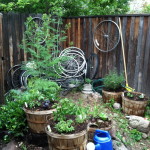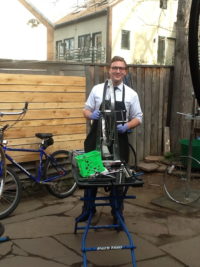Ancient Art: Wheel Building
Have you ever wanted to learn how to build a wheel? Wheel building is an ancient science that started to get good when people used horse carts to move them and their things around.
A Wheelsmith of that time was ‘something to be proud of’ because each wheel comes a unique set of problems to solve. Back in the old days, there were no “spare parts” for wheels.
Every wagon wheel was different. The Wheelsmith ‘just had to fix it’.
At the end of the day, his wheel was going to be tested and there were no lies that he could say if the wheel went otherwise.
The evidence of whether the horse drawn wheel cart would not collapse or not is plain to see.
Cheaper to Buy Pre-Made Machine Built Wheels than Start from Scratch
These days, it is cheaper to buy pre-made wheels than hand build a bicycle wheel from a hub, rim, spokes, and nipples. Thus, the art of bicycle wheel building is only practiced by a few. It will never die, however, because those that are willing to pay for the parts and use the time to build a proper wheel will see the benefit in longevity and efficiency. A hand built wheel is more efficient because the hub, rim, spoke, and nipple are selected exactly for the purpose and uniqueness of you. It will be either more functional or lighter because we rid the extra that we do not need.
Three Thousand Dollar Spoke Machine
At Standard Bike Repair, we have a host of hubs and rims laying around wanting to be wheels. There is a spoke machine sitting near the truing stand that cost three thousand dollars and can make any size spoke you can dream of, any color, or any material. Having a spoke machine that cuts and threads spokes makes an inventory of 500 spokes be a potential party of spoke combinations. Ryan bought the spoke machine in 2012 because he did not know how to build a wheel at that time and every time he tried; he would measure the hub and spoke to exact specs, wait a full week for those spokes to come in, buy them in boxes of 100 for $75 and then cross his fingers and hope that the gigantically complex spoke calculation and his measurements were right. The projects failed more often than not.
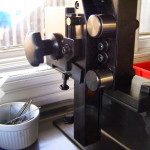
Reasons to Invest in the Capital Asset of a Spoke Machine
He reasoned that a spoke machine which was expensive and not the norm in bike shop business was the route to take because it would save shelf space to not need an infinite amount of spoke combinations sitting around collecting a couple years worth of dust before one was needed. Not only that, it allowed him to buy boxes of spokes at bike swaps on the cheap because they were trying to unload them. The exact millimeter of the spoke was not important because anything could be cut or re-thread. The range of spokes was also a factor; now Ryan could carry one length of extra long yellow spokes, red, blue, pink, white, purple, black, silver, green, orange or titanium. We don’t currently have titanium because they are roughly $6 per spoke. But it is an option. With aero spokes and butted spokes, which the racers love, there is still a need to carry an assortment of near-lengths to accommodate for the changes in spoke pattern that won’t allow you to nip too much off the spoke before structural changes are affected. For straight gauge spokes, the cut and new threads will be same all the way down the elbow.
How Much Does it Cost?
Ryan chose to price the cost of the wheel building at $20 because that is a low enough price for customers to justify on an esoteric skill that they may never use again and the fact that there is a hidden benefit to Standard Bike Repair. The customer learns how to build the wheel, but they do not get to keep it. Believe it or not, you will build a wheel strong enough that Ryan will be proud to put Standard Bike Repair’s name on and offer it for sale. Due to the time taken to build a handmade wheel and the drive of customers to need wheels on a consistent basis, there will always be a need for machine built wheels for simple replacements. Because Ryan often ends up with quality recycled hubs, and that he has a spoke machine and can buy rims at wholesale prices, it can make financial sense to build refurbished wheels as part of the overall Standard Bike Repair business plan. In a Tom Sawyer fashion, he is attempting to rope you in help him build wheels.
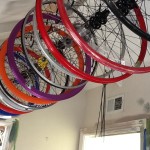
Zero Waste Practices include Building Wheels from Spare Parts
Besides you learning how to build a wheel, Standard Bike Repair getting a wheel to store in inventory and Ryan potentially making money on the whole thing which allows for the shop to continually sustain, there is the benefit of this program contributing to the Zero Waste Certification program. Unless, more than 85% of inbound material is made use of in a productive way and not landing in the landfill, Standard Bike Repair will fall out of contention. Zero Waste ordinances are cropping up in the most progressive cities. Not only is it a good idea for the planet, a business as small as Ryan’s can utilize the long term benefits of a Zero Waste strategy for survival. Every edge in space, time, money, local resources, money and customer faith is necessary to thrive in the Boulder bike shop market.
Brainstorm: If Ryan wants to be self-employed, what are the options?
Standard Bike Repair was designed by Ryan to provide him with employment that can be done out of the uniqueness of his home. It worked because overhead is relatively low for a Boulder bike shop, he has an insane drive to succeed, most of the tools are inexpensive, bike mechanics wasn’t that difficult to learn, he enjoys teaching and people are willing to pay him to do it and the mass culture of biking in Boulder already exists.
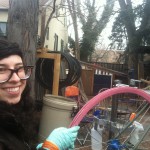
Operating with the Law and Living a Great Life
Boulder’s business-in-a-home licensing laws do not allow for more than one employee to be active out of a residence. Thus, Ryan was never allowed to hire people outside of subcontractor status. Yet, the bike shop is very busy. He needs the help. There is no way that the shop can continue to grow and cater to the annually growing number of bikes serviced without the customers participating and Ryan constantly refining the and maintaining the various systems of inventory, bookkeeping, marketing, tool selection and bike repair. The rotating schedule of wheel building classes is offered to expand on the idea that Standard Bike Repair is a community based bike shop despite not having non-profit status or more than one name on the tax forms.
Call to Action
Offer: learn how to build a wheel with Ryan using pre-selected hub and rims. If you are interested, call Ryan and make an appointment to start your wheel. Weekday evenings, Saturdays and weekday hours are available. You will start with taking the estimated rim diameter with the Sutherland’s Wheel Tape roll and then pick up the calipers for the five measurements of the hub.
Scheduling a Wheel Building Lesson
The wheel may take more than one hour session. Depending on schedules, there may or may not be a second or third student with you. At the end of your first session, we will schedule a second session based on how far we get in the first hour. It can be a time consuming process. First, there is the process of obtaining the spoke measurement which requires careful measuring and the entering of the results into an online spoke calculator. Even though, the spoke machine can cut hundreds of spokes in a relatively short amount of time, setting up the machine to cut and thread a single wheel can take the better part of a half hour. From there, we have the lacing part of the process. Ryan will go over wheel theory and hand motions as you round up the wheel. Once, the wheel has been laced, it is time to take it from your lap to the truing stand.
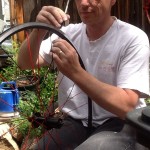
Truing Stand Tips, Tricks, and Laws of Physics
It is in the truing stand where you make it into a fully tight wheel. Although, there are vast amounts of knowledge in the wheel building wheel, many of the concepts are basis and not hard to do. Ryan will explain the factors and processes in a way that is simple to understand. Through six years of Standard Bike Repair, he has learned how to say things in ways that point out the obvious to bike mechanics, but perhaps invisible to the untrained eye. Once you see it the first time, and watch how the wheel reacts to what is done, you will not forget.
Efficiency by Design
Efficiency is essential at Standard Bike Repair. Efficient in terms can be expressed in how Ryan uses his life of time to run Standard Bike Repair, inventory levels, cash in the bank and generosity of customers in the form of participating in Watch/Help/Learn, and utilizing resources given to the shop. Offering this class to make wheels with things like leftover quality hubs, new rims at wholesale prices, a spoke machine that can do anything and Ryan’s willingness and need to create a space for the customers to participate in the shop in a way that adds to the growth of the business is essential and symbolic of the strategy of the overall mission at Standard Bike Repair.
Wheel Building Classes: Pricing Theory
Ryan was originally going to offer the class for $25. It would take 1-2 sessions and build a sellable wheel. One to two sessions would be 60 minutes to three hours of Ryan’s time which was less than the usual $60 per hour for the Watch/Help/Learn consulting and repair, but worth it because it taps a not used before income stream of the customer’s desire to learn and participate in the building of a bicycle wheel at a wonderful price. Twenty dollars was chosen in the final edit because of a realization that he had while working at U.S. Bank as bank teller for four years when a pile of money was sitting on top of a giant safe and 90% of the bills were twenties. Ryan did some heavy generalizations and considered that the “old days” version of “one dollar” meant something, but that in today’s world “one dollar” meant not much more than a candy bar. Why was the dominant bill on the counter of the safe a $20 and not the $1? Ryan jumped to the conclusion that the “2016 one dollar” is actually the “twenty dollar bill”. Now present day, Ryan and Standard Bike Repair are offering to teach customers how to build a wheel for “one dollar”. The presumption is that customers will pay $1 for a skill that they may never use again, an experience that will pass into the memory fades. At the least, customers will learn how to true a wheel. Most likely, they will be able to do it themselves the second time provided they have that medium-expensive truing stand.
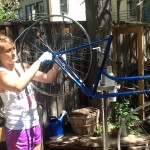
What do you get? What do we get?
The overall benefits include offering the class to the community, Standard Bike Repair earning a hand built wheel to sell, “one dollar” for the time and the need for both sides to “put a little skin in the game”. My Dad once told me that advice. We were in the process of applying for a scholarship set up by the State of Colorado to outfit me with a pair of state-of-the-art hearing aids. Originally, I was under the impression that the entire thing was going to be free, I was frustrated and at a loss when I heard that we needed to come up with “half”. Looking back, it seems silly to complain. As I was talking with my Dad, he understood my confusion and saw both sides. He said that to get a deal done amongst parties, both people have to “put a little skin in the game”. His point was that if both parties are not self-interested at least a little bit, then it is probably a weak or unfair deal.
Doing the Process Lots of Times eventually results in Efficiency
The result of all this is that we are offering to go through the process of building a wheel with you and that we want to make it at an attractive price so that it happens often. Building wheels on a consistent basis will keep Ryan’s skills sharp and move that inventory. There are always hubs and rims laying around. Bike shops just have them. Whether the shop does custom hand built wheels or not, bike shops are a magnet for parts. And we have lots of them to fit every various bike you could possibly bring us. The better we are at inventory control, the more satisfied customers are that their parts are in stock, the more profitable the business is. Few people are willing to wait for the parts. Every bike shop employee knows the blank stares customers give them when they say “We don’t have that part, but we can order it for you?” Usually, the customer is working up a way to say “No” in a polite way and deal with the resentment that comes with an unfinished job.
Lots of Bike Parts
At Standard Bike Repair, Ryan makes it a mission to carry “one-of-everything”. In the case of wheels, for instance, when a customer calls Ryan from the side of the road when they hit a curb trying to avoid a car, he needs to have it in stock or there is going to be a lost sale. All the truing in the world couldn’t save that wheel. Truing is about fine tuning the tension of the spokes. A wheel that hits something hard and suffers damage to the rim is forever broken. Bike shops need more than just skilled mechanics. They need the parts to go with the talent. No parts can mean no fixie. Unless, the mechanic is the modern day MacGyver, who can manufacture a part out of scrap metal, lubricant and a beer can, then the mechanic needs the part in order to complete the repair. Ryan takes great pride in having bike parts in stock for modern and vintage bikes of all sizes.
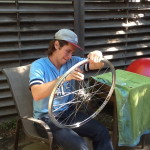
Wheels, Deals and Watch/Help/Learn
In the case of wheels, the varieties are particularly numerous. Different bikes have different brake and rim styles to go with the sizes that are invented as time passes. Some bike shops will tell customers that “they don’t make those parts anymore”. Sometimes, it is true. Sometimes, it is because they don’t want to work on particularly old or cheap bikes. Old or cheap can mean crazy rabbit holes of “didn’t see that” or “it is so rusty that multiple extra processes were needed to bring it back into shape”. Ryan is willing to work on all kinds of bikes with you. Part of the beauty of Watch/Help/Learn is that if your bike is a particular pain, the extra time needed to find a solution is directly affected on the minutes of labor that the customer is in debt for. It encourages customers to not leave their bikes out for winters on end and to bring the bike in when small things go out of whack. There are two types of bike repairs: simple things that take a matter of minutes to work out and get the customer back out on the road and massive projects of neglect. Watch/Help/Learn will teach you how to notice things that are not right and if the universe is shining that day, you may even know how to fix it yourself.
Don’t you think?
When Ryan started Standard Bike Repair, he met with one the consultants at Boulder’s Small Business Development Center at Folsom and Canyon. The free resource offered consultation with business plan ideas. After Ryan made his pitch, she asked the obvious, but prepared for question: “If you teach the customers how to do it, then you will be out of a job, don’t you think?”
After Extremely Careful Reasoning…
“No… maybe. Yes. Customers will learn certain simple things right away. None of said simple things would be more than a click or two anyway. I hope to invite customers to join me in the pains and pleasures of fixing a bike that is theirs and thus particularly important to them. We will do so “1-on-1” which will give me an opportunity to be so nice and professional that customer retention is high. It is also the only way that I am legally allowed to get help for the business being run out of a home. Plus, it is a service not offered anywhere else in town. And further, my personality is generally considered charming and my teaching simple. I think customer will like to learn how to fix their bike and it will be an efficient, thus cost saving business model. The customers that we “lose” because they somehow mastered bike mechanics in the short amount of time that the classes are is some type of DIY genius who has lots of initiative.
